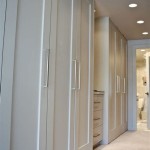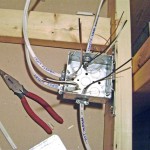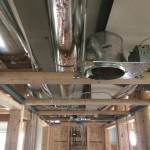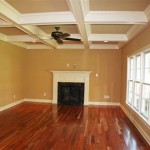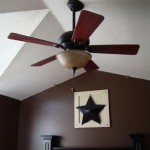How To Cover Air Vents In Your Ceiling
Air vents in the ceiling serve a crucial purpose in circulating air throughout a building, facilitating heating, ventilation, and air conditioning (HVAC) systems. However, situations may arise where temporarily or permanently covering a ceiling air vent becomes necessary. This article provides a comprehensive guide on how to cover air vents in your ceiling, outlining various reasons for doing so, different methods, potential considerations, and preventative measures.
Understanding the rationale behind covering a ceiling air vent is paramount before proceeding. The decision should be based on informed reasoning and a clear understanding of the potential consequences. Simply wanting to block airflow without considering the system's overall design can lead to inefficiencies and even damage to the HVAC equipment. Therefore, weighing the pros and cons is a crucial initial step.
One common reason for covering a ceiling air vent is to redirect airflow. In rooms that are consistently too cold or too hot, adjusting the airflow distribution can improve comfort. By temporarily blocking a vent in an already adequately heated or cooled room, more air can be directed to areas that require it. Another reason is during renovation or construction. Covering vents during painting, sanding, or other messy activities prevents dust and debris from entering the ductwork, which can later circulate throughout the building, degrading air quality and potentially damaging HVAC components.
Furthermore, eliminating drafts is another justification. Sometimes, even when the HVAC system is not actively running, cold air can seep through vents, creating uncomfortable drafts. Covering these vents, particularly during colder months, can improve thermal comfort. Lastly, minimizing noise transfer can be a factor. Ceiling vents can sometimes act as conduits for sound, allowing noise from other rooms or the HVAC system itself to travel through the ductwork. Covering the vents can help dampen this noise transmission, providing a quieter environment.
Assessing the Situation
Before taking any action, a thorough assessment of the situation is essential. This involves identifying the type of air vent, understanding the HVAC system's design, and considering potential repercussions. Different types of air vents exist, ranging from simple stamped metal grilles to more elaborate adjustable diffusers. The covering method will depend on the vent's design and intended duration of coverage.
Understanding the HVAC system's design is crucial to avoid imbalances. In a forced-air system, blocking a vent without considering the consequences can increase pressure in the ductwork, potentially straining the blower motor and reducing the system's efficiency. Systems are often designed with a specific return air to supply air ratio, and significantly altering this balance can lead to issues. In some cases, zoning systems are installed, where individual rooms or areas have separate temperature controls. Covering vents in such systems may disrupt the intended zoning configuration, leading to uneven heating or cooling.
Potential repercussions of covering air vents should be carefully considered. Blocking a vent can lead to localized temperature imbalances, causing some rooms to become overly hot or cold. It can also increase the overall energy consumption of the HVAC system if it has to work harder to compensate for the blockage. In extreme cases, it can damage the HVAC equipment by causing excessive pressure buildup or overheating. Therefore, a well-thought-out plan that addresses these potential issues is necessary.
Temporary Covering Methods
For temporary blockage, several methods offer effective solutions without causing significant long-term problems. These methods are ideal for situations such as painting, minor renovations, or short-term draft elimination.
Using magnetic vent covers is a simple and effective method. These covers consist of a flexible magnetic sheet that adheres to the metal vent. They are easy to install and remove, making them ideal for temporary use. However, they are only effective on vents made of ferrous metal. Before purchasing magnetic covers, one must verify that the vent is indeed magnetic.
Another option is using painter's tape and plastic sheeting. This method is particularly useful during painting or other messy activities. Simply cover the vent with a piece of plastic sheeting and secure it in place with painter's tape. Ensure that the tape is properly adhered to create a tight seal and prevent dust or paint from entering the ductwork. Painter's tape is recommended as it is designed to be easily removable without damaging the ceiling paint.
Utilizing cardboard or foam board cut to size is another resourceful approach. Cut a piece of cardboard or foam board slightly larger than the vent opening and secure it with tape. This method is effective for blocking airflow and can be easily customized to fit different vent sizes and shapes. Foam board provides better insulation properties compared to cardboard, making it a more effective option for blocking drafts. Remember to use tape that won't damage the ceiling surface when removed.
Permanent or Semi-Permanent Covering Methods
For more permanent solutions, such as vents in unused rooms or areas where airflow is consistently undesirable, more robust methods are needed. However, consulting an HVAC professional before undertaking any permanent modifications is highly recommended to avoid potential system imbalances or damage.
Installing vent blockers or deflectors offers a customizable solution. These devices, typically made of plastic or metal, are designed to redirect or completely block airflow from a vent. Some vent blockers are adjustable, allowing for precise control over the amount of airflow. Vent deflectors can be used to direct airflow away from certain areas, such as furniture or workspaces.
Using foam insulation is an effective method for blocking airflow and adding insulation. Cut a piece of foam insulation slightly larger than the vent opening and insert it into the vent. The foam will conform to the shape of the vent, creating a tight seal. This method is particularly useful for blocking drafts and reducing noise transmission. Ensure that the foam insulation used is fire-resistant to prevent any potential safety hazards.
Removing and sealing the vent entirely is the most permanent solution. This involves removing the vent cover and sealing the duct opening with metal tape or other appropriate sealant. This method is only recommended if the vent is no longer needed and will not be required in the future. After sealing the duct opening, the ceiling can be patched and painted to match the surrounding area, creating a seamless finish. Consider consulting with a building inspector or HVAC technician to ensure compliance with local building codes before undertaking this type of permanent modification.
Potential Considerations and Preventative Measures
Several factors should be considered before covering air vents, regardless of the method chosen. One key aspect is the overall HVAC system balance. Blocking one or more vents can alter the system's pressure and airflow distribution, potentially leading to inefficiencies or damage.
Preventive measures should be implemented to mitigate any potential adverse effects. Regularly inspect the HVAC system to ensure it is operating efficiently and that there are no signs of stress or damage. Consider having a professional HVAC technician perform a system evaluation to assess the impact of covering the vents and make any necessary adjustments. Monitor the temperature in different rooms to ensure that the changes are not causing significant imbalances.
Regularly cleaning the HVAC system and ductwork is also crucial. Dust and debris can accumulate in the ducts over time, reducing airflow and degrading air quality. Cleaning the ducts helps maintain optimal airflow and prevents contaminants from circulating throughout the building. Consider using a HEPA filter in the HVAC system to capture smaller particles and improve air quality.
Finally, document any changes made to the HVAC system, including which vents were covered and the reasons for doing so. This information can be helpful for future maintenance or troubleshooting. Keep track of any changes in energy consumption or temperature imbalances to assess the impact of covering the vents.

Changing All My A C Heating Ceiling Vents For Better Airflow Between Naps On The Porch
The Drywall Around My Ceiling Air Vent Is All Broken Up What Can I Fill Space With So A New Cover Be Ed In Quora

Changing All My A C Heating Ceiling Vents For Better Airflow Between Naps On The Porch

How To Open And Close Ceiling Air Vents

Easy To Install Modern Vent Cover For Ceilings Walls And Floors Angela Marie Made

How To Redirect Airflow From Ceiling Vent

How To Replace Your Ac Vent Covers Clf Services

Quick Ceiling Vent Fix

Why Adding A Return Air Vent Improves Your Home S Comfort Bird Family Insulation

Easy To Install Modern Vent Cover For Ceilings Walls And Floors Angela Marie Made
Related Posts



